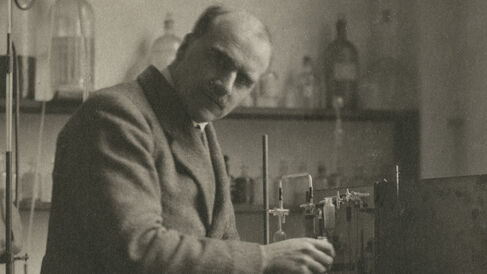A new School of Biochemistry

In 1920, the Trustees for the estate of Sir William Dunn provided funds for the University of Cambridge to establish a School of Biochemistry. Dunn was a Scottish banker and merchant, born in Paisley, for which constituency he became a Liberal Member of Parliament. He made his fortune in South Africa and, having no heirs, left it to charity for, among other things, "the support of hospitals, as well as to alleviate human suffering and to encourage education." The money contributed by the Trustees was to establish a Chair of Biochemistry (The Sir William Dunn Professorship) and also to provide a building to house the new Department of Biochemistry.
In 1922, the Trustees made a further endowment in the form of a Readership, a position first held by the legendary John Burdon Sanderson Haldane. Haldane's father and various others of his family were physiologists, but he chose to read Mathematics and Greats whilst at Oxford. As a student he mastered Greek, Latin, French and German, he fought with manic bravery in the First World War, and he became a popular science writer and broadcaster (in 1923, he even pointed out that we would run out of coal as a source of power and should build a network of hydrogen-generating windmills!). Haldane joined the Communist Party in 1940, and was on the editorial board of the Daily Worker, before leaving in 1950 in protest over Lysenkoism. No less a figure than Sir Peter Medawar described Haldane as "the cleverest man I evermet", making contributions to the study of enzymes and the field of genetics that remain influential to this day.
It is well known that Haldane had a habit of doing experiments on himself. He also had a habit of consuming large numbers of sugar lumps at tea that led to someone trying an experiment on him of which he was unaware. Dorothy Needham witnessed the tea-time entertainment in which holes had been bored in several sugar lumps and then filled with quinine. She averred that Haldane "gobbled the lumps as usual without showing the slightest sign of noticing anything out of the way." Haldane was a dab hand at writing rhymes, but it was an anonymous author who commemorated his tea-time trait, at the same time immortalising one of the Department's long line of distinguished tea ladies:
How rude of the reader
To put on his feeder
And eat so much sugar at tea;
But Olive has spotted
His manners besotted
And double his tea bill will be.
